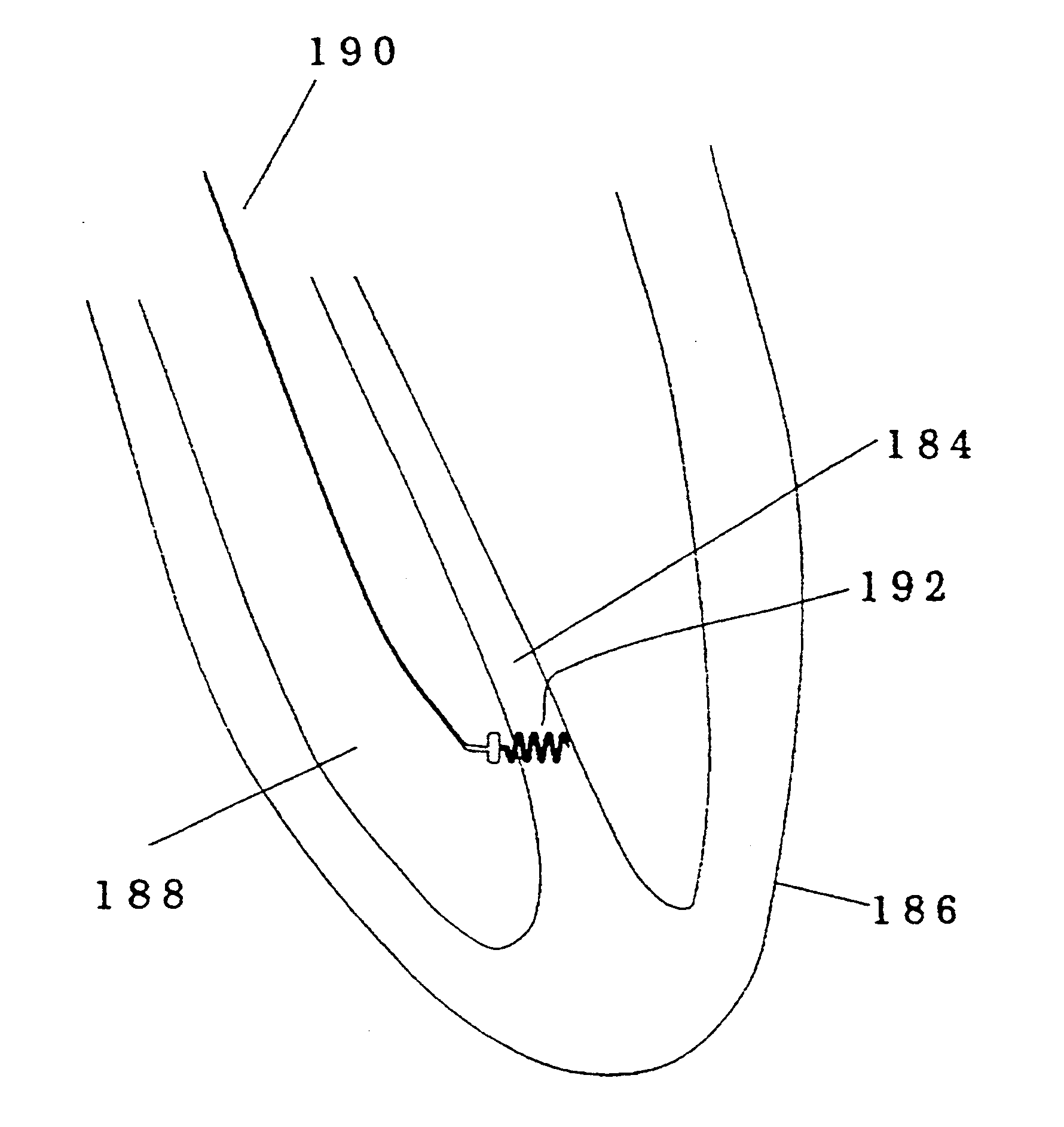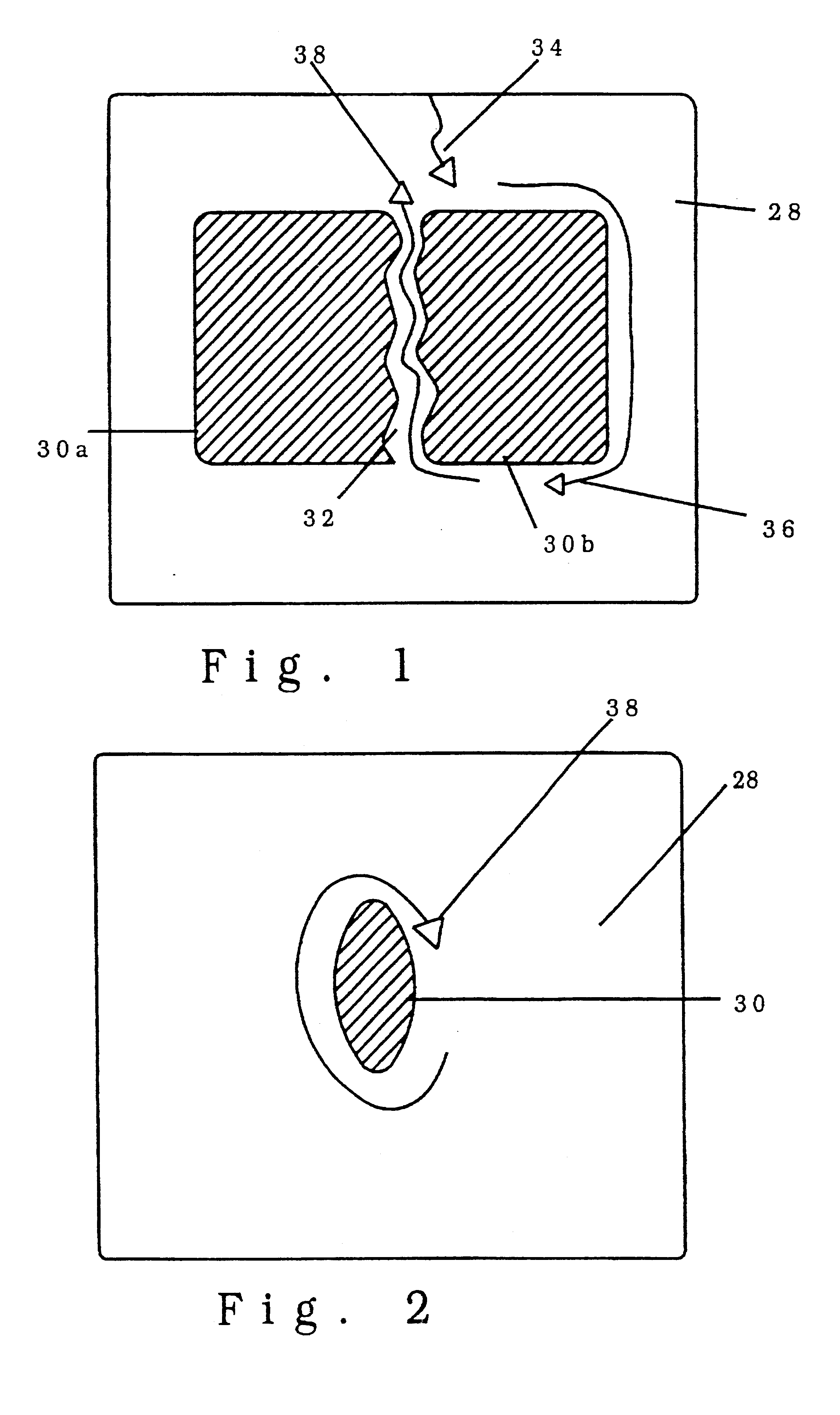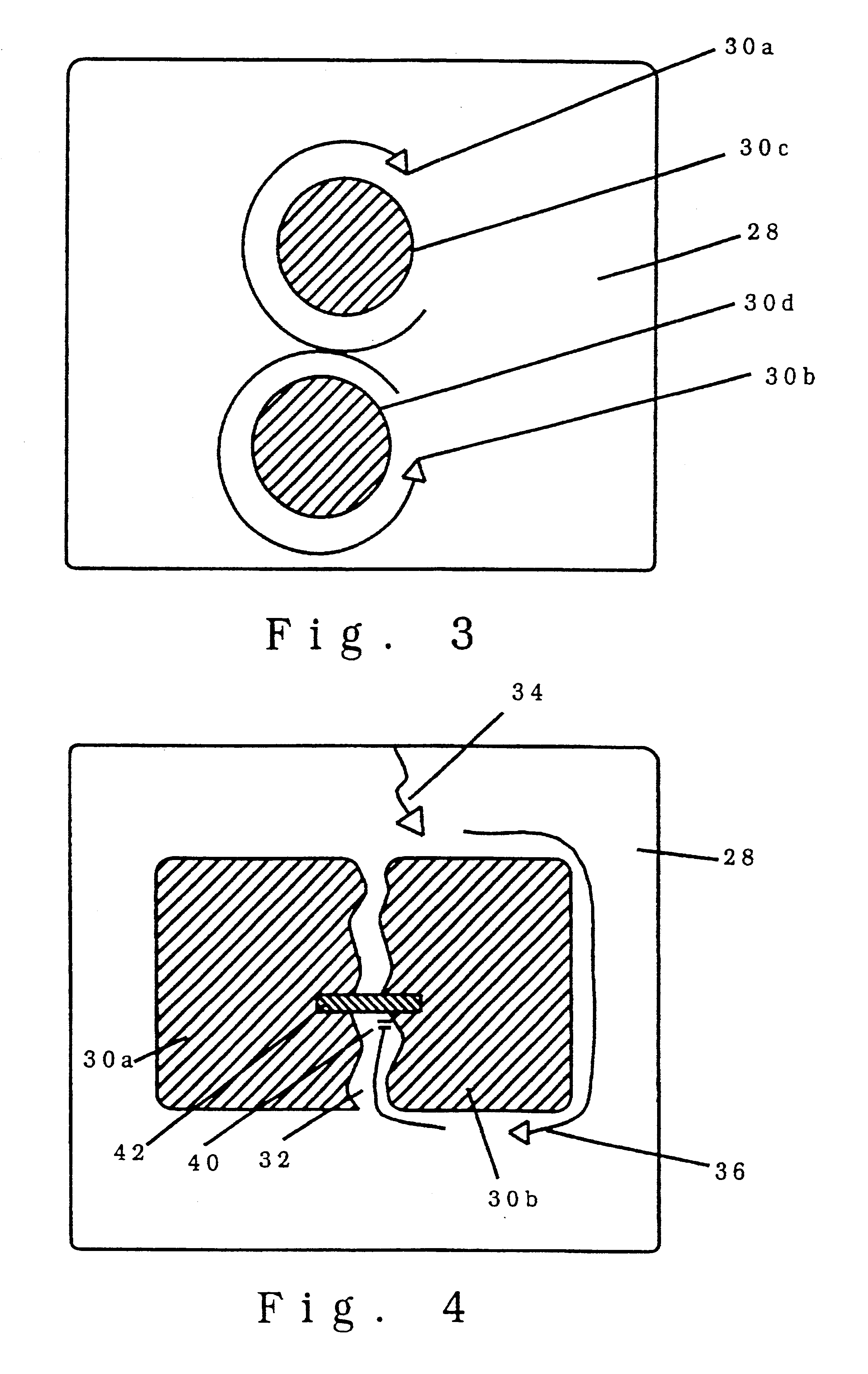Implantable device for penetrating and delivering agents to cardiac tissue
a technology of implantable devices and cardiac tissue, which is applied in the field of endocardial mapping, can solve the problems of premature stimuli to some regions of the heart, more complicated spatial and temporal disruption of the electrical synchronization of the heart cells, and completely disrupting the action of the heart overall, so as to effectively eliminate arrhythmogenic sites, reduce the effect of arrhythmogenic effects, and reduce the amount of damage upon implantation
- Summary
- Abstract
- Description
- Claims
- Application Information
AI Technical Summary
Benefits of technology
Problems solved by technology
Method used
Image
Examples
Embodiment Construction
FIG. 7 shows a perspective view of a helix embodiment of this implantable device. In this preferred embodiment, the entire structure is made of a biocompatible Platinum Iridium alloy that can be formed using investment casting, machining or other similar techniques. Helix embodiment shown has a sharp tip 44 to allow for ease in advancing the helical structure into the heart wall. A number of loops of a helix 46 have the same diameter 48 and spacing 50 to prevent excessive damage to the myocardium upon insertion. By having the same diameter 48 at each cross section of the helix 46 and spacing 50 between the loops of the helix 46 the path through the myocardium followed by each loop of the helix 46 will be the same. The spacing 50 can vary from very tight spacing in which distance 50 between the two loops of helix 46 are approximately two times the size of diameter 52 of structure 53 that defines helix 46 to loose spacing in which distance 50 between the two loops of helix 46 are appr...
PUM
 Login to View More
Login to View More Abstract
Description
Claims
Application Information
 Login to View More
Login to View More - R&D
- Intellectual Property
- Life Sciences
- Materials
- Tech Scout
- Unparalleled Data Quality
- Higher Quality Content
- 60% Fewer Hallucinations
Browse by: Latest US Patents, China's latest patents, Technical Efficacy Thesaurus, Application Domain, Technology Topic, Popular Technical Reports.
© 2025 PatSnap. All rights reserved.Legal|Privacy policy|Modern Slavery Act Transparency Statement|Sitemap|About US| Contact US: help@patsnap.com



